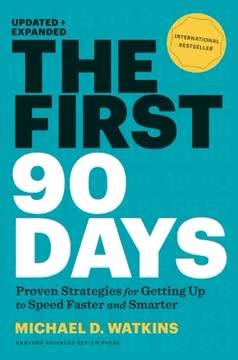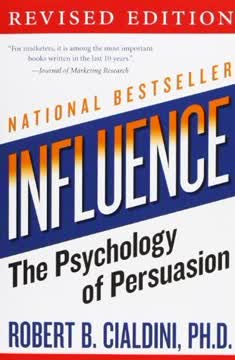Key Takeaways
1. Technology has rewired our brains, reshaping consumer behavior
We've gone from mass markets to market segments to market niches to micro niches to markets of one.
Digital transformation of consumer psychology. The ubiquity of technology has fundamentally altered how consumers think, process information, and make decisions. This shift has led to:
- Shorter attention spans
- Preference for visual over textual information
- Increased multitasking
- Expectation for immediate gratification
New consumer needs and behaviors. As a result of these changes, consumers now exhibit:
- Craving for constant stimulation and novelty
- Increased reliance on peer reviews and social proof
- Demand for personalized experiences
- Willingness to share personal data for convenience
These shifts require marketers to adapt their strategies to align with the new consumer mindset, focusing on quick, visually appealing, and personalized content that can capture attention in a crowded digital landscape.
2. Consumer empowerment: The new driving force in marketing
Consumers know their influence, and it has permanently affected their expectations and relationships with retailers and businesses.
Shift in power dynamics. The internet and social media have given consumers unprecedented access to information and platforms to voice their opinions. This has led to:
- Increased consumer skepticism towards traditional advertising
- Demand for transparency from brands
- Expectation of two-way communication with companies
Implications for marketers. To succeed in this new landscape, businesses must:
- Prioritize customer experience and satisfaction
- Engage in authentic, responsive communication
- Leverage user-generated content and reviews
- Adapt to consumer feedback quickly
The empowered consumer requires a fundamental shift in marketing approach, moving from a top-down model to a more collaborative, consumer-centric strategy that acknowledges and respects the customer's voice and influence.
3. Isolation and individualism: The paradox of hyper-connectivity
We're pulled toward radical individualism for reasons having to do with technology, emotional isolation, and an increased need for self-protection.
The disconnected connection. Despite being more connected than ever through technology, people are experiencing:
- Increased feelings of loneliness and isolation
- Reduced face-to-face interactions
- Superficial online relationships
- Heightened focus on self-image and personal branding
Marketing in an individualistic society. To address these shifts, marketers should:
- Create products and experiences that foster genuine connections
- Emphasize community-building in brand strategies
- Offer personalized solutions that cater to individual needs
- Provide platforms for meaningful interactions among consumers
The challenge for marketers is to leverage technology to create authentic connections and combat the paradoxical isolation brought about by hyper-connectivity, while still catering to the individualistic tendencies of modern consumers.
4. Intensified emotions: The new normal for consumers
Anger is the enemy of fairness and rationality. Shoppers in a miffed state of mind are more likely to violate the unspoken rules of fair exchange.
The emotional consumer. Today's consumers are experiencing heightened emotional states, characterized by:
- Increased anxiety and stress
- Higher levels of anger and frustration
- Greater emotional volatility
- Intensified reactions to both positive and negative experiences
Emotional marketing strategies. To effectively engage with emotionally charged consumers, marketers should:
- Develop empathetic communication strategies
- Create products and services that address emotional needs
- Provide exceptional customer service to diffuse negative emotions
- Leverage positive emotions to build brand loyalty
Understanding and addressing the intensified emotional landscape of modern consumers is crucial for marketers. By acknowledging and responding to these heightened emotions, brands can create stronger connections and foster long-term customer relationships.
5. Technovation: The key to capturing consumer attention
Consumers are hungry for "new." New products and new experiences. Innovation is a demonstration of the coolness, smarts, and consumer-centricity that today's shoppers demand.
The allure of innovation. In a world saturated with products and information, consumers are drawn to brands that offer:
- Cutting-edge technology integration
- Novel experiences and products
- Seamless omnichannel experiences
- Smart, connected devices and services
Implementing technovation. To stay relevant, businesses should:
- Invest in research and development
- Collaborate with tech startups and innovators
- Regularly update and improve existing products
- Create immersive, technology-driven brand experiences
Technovation is not just about adopting new technologies; it's about constantly evolving and reinventing products, services, and experiences to meet the ever-changing expectations of tech-savvy consumers. Brands that successfully integrate innovation into their DNA will have a significant advantage in capturing and retaining consumer attention.
6. Authenticity: Building trust in a skeptical marketplace
Authenticity is the new black.
The trust deficit. In an era of widespread skepticism, consumers are:
- Increasingly distrustful of traditional advertising
- Seeking genuine, transparent brand communications
- Valuing brands that align with their personal values
- Looking for evidence of corporate social responsibility
Cultivating authenticity. To build trust, brands should:
- Develop a clear, consistent brand voice and identity
- Share behind-the-scenes content and company stories
- Admit mistakes and address issues openly
- Engage in meaningful dialogue with consumers
- Demonstrate a commitment to social and environmental causes
Authenticity has become a crucial differentiator in the marketplace. Brands that can genuinely connect with consumers on a human level, demonstrate transparency, and consistently deliver on their promises will be better positioned to build lasting trust and loyalty in an increasingly skeptical consumer landscape.
7. Consumer involvement: From passive buyers to active participants
Consumers want to trust. They want the faster, simpler, and more enjoyable transactions made possible by trust. They want the sense of belonging that comes with loyalty.
The participatory consumer. Modern consumers are no longer content with passive consumption; they seek:
- Active involvement in product development and improvement
- Opportunities to co-create and customize products
- Platforms to share their opinions and experiences
- Recognition for their contributions and loyalty
Strategies for consumer involvement. To engage consumers effectively, brands should:
- Implement crowdsourcing initiatives for product ideas
- Offer customization options for products and services
- Create loyalty programs that provide meaningful rewards
- Leverage social media for two-way communication
- Host events and contests that encourage participation
By involving consumers in various aspects of the business, from product development to marketing, brands can foster a sense of ownership and loyalty among their customer base. This shift from passive consumption to active participation not only enhances the consumer experience but also provides valuable insights and innovations for the brand.
8. Intensity: Breaking through in a distracted world
It takes more to break through to busy brains. Not only are we not bothered by interruptions, but our brains have come to look forward to distractions.
Capturing attention in a noisy world. In an environment of constant stimulation, marketers must:
- Create more impactful, emotionally resonant content
- Utilize unexpected and surprising elements in campaigns
- Deliver messages with increased frequency and across multiple channels
- Leverage sensory marketing techniques
Strategies for intense engagement. To break through the noise, brands should:
- Develop immersive brand experiences
- Use storytelling to create emotional connections
- Implement gamification in marketing and product design
- Utilize bold, attention-grabbing visuals and messaging
- Create time-sensitive offers and limited-edition products
The challenge for marketers is to find the right balance between intensity and relevance. While it's crucial to create content and experiences that stand out, they must also provide value and resonate with the target audience. By combining intensity with authenticity and consumer-centricity, brands can effectively capture attention and drive engagement in today's distracted marketplace.
Last updated:
FAQ
What's "Decoding the New Consumer Mind" about?
- Understanding Consumer Behavior: The book explores how and why consumer behavior has changed in recent years, focusing on the psychological shifts that influence shopping and buying decisions.
- Impact of Technology: It delves into how technology has rewired consumer brains, affecting their emotional and relational needs, and creating new motivations for buying.
- Strategies for Marketers: Kit Yarrow provides strategies for marketers to connect with today's consumers by understanding these psychological changes and adapting their approaches accordingly.
- Cultural Shifts: The book also examines three major sociocultural shifts—technological, social, and emotional—that have transformed consumer psychology.
Why should I read "Decoding the New Consumer Mind"?
- Insightful Analysis: The book offers a deep dive into the psychological changes in consumer behavior, providing valuable insights for marketers and businesses.
- Practical Strategies: It provides actionable strategies to connect with modern consumers, making it a useful guide for anyone in marketing or retail.
- Understanding Trends: By understanding the trends and shifts in consumer behavior, readers can better anticipate and meet consumer needs.
- Expert Author: Written by Kit Yarrow, a consumer psychologist, the book combines academic knowledge with practical wisdom.
What are the key takeaways of "Decoding the New Consumer Mind"?
- Rewired Brains: Technology has changed how consumers think, feel, and make decisions, leading to new buying motivations.
- Emotional Consumers: Consumers are more emotional, driven by stress, anxiety, and a need for control, impacting their shopping behavior.
- Trust and Authenticity: Building consumer trust through authenticity and humanizing brands is crucial in today's market.
- Involvement and Engagement: Engaging consumers through involvement, such as customization and crowdsourcing, can build loyalty and trust.
How has technology impacted consumer behavior according to "Decoding the New Consumer Mind"?
- Rewired Thinking: Technology has changed how consumers process information, leading to faster, less focused decision-making.
- Empowerment: Consumers feel more empowered with access to information and reviews, influencing their trust in brands.
- New Needs: Technology has created new emotional and practical needs, such as the desire for immediacy and convenience.
- Integrated Shopping: Consumers expect a seamless shopping experience across online, mobile, and in-store channels.
What strategies does Kit Yarrow suggest for marketers in "Decoding the New Consumer Mind"?
- Technovation: Incorporate technology and innovation into products and shopping experiences to meet consumer expectations.
- Authenticity: Build trust by being transparent, humanizing brands, and creating genuine connections with consumers.
- Involvement: Engage consumers through customization, crowdsourcing, and contests to foster loyalty and advocacy.
- Intensity: Capture consumer attention with intense, emotionally engaging messaging and experiences.
What are the psychological shifts identified in "Decoding the New Consumer Mind"?
- Innovation Optimism: Consumers are eager to try new products, driven by trust in technology and innovation.
- Consumer Empowerment: Access to information and reviews has empowered consumers, changing their relationship with brands.
- Faster Thinking: Technology has led to faster, less focused decision-making, requiring more intense marketing efforts.
- Symbol Power: Consumers rely more on visual and symbolic cues, making branding and messaging more critical.
How does "Decoding the New Consumer Mind" address the issue of consumer trust?
- Authenticity is Key: Building trust requires authenticity, transparency, and a genuine connection with consumers.
- Humanizing Brands: Use social media and employee engagement to create a more relatable and trustworthy brand image.
- Consistency Matters: Consistent messaging and brand values help establish trust and reliability with consumers.
- Addressing Distrust: Understand and address the reasons behind consumer distrust, such as past negative experiences.
What role does emotional consumer behavior play in "Decoding the New Consumer Mind"?
- Emotional Drivers: Stress, anxiety, and anger are significant emotional drivers affecting consumer decisions.
- Therapeutic Shopping: Many consumers use shopping as a form of therapy to relieve stress and gain a sense of control.
- Bargain Hunting: Emotional consumers are drawn to bargains as a way to rationalize purchases and feel in control.
- Emotional Engagement: Brands that engage consumers emotionally can build stronger connections and loyalty.
How does "Decoding the New Consumer Mind" suggest brands can humanize themselves?
- Social Media Engagement: Use social media to interact directly with consumers, showcasing the brand's personality and values.
- Employee Stories: Highlight employees and their stories to create a more relatable and human brand image.
- Customer Involvement: Involve customers in brand activities, such as contests and crowdsourcing, to foster a sense of community.
- Authentic Communication: Use genuine, relatable language in all brand communications to build trust and authenticity.
What are the best quotes from "Decoding the New Consumer Mind" and what do they mean?
- "Authenticity is the new black." This quote emphasizes the importance of authenticity in building consumer trust and brand loyalty.
- "Consumers are hungry for 'new.'" It highlights the consumer desire for innovation and fresh experiences, driven by technology.
- "Put your money where your mouth is." This suggests that brands need to demonstrate their values and promises through actions, not just words.
- "Connection is the emotional driver of our times." It underscores the fundamental human need for connection, which brands can fulfill through genuine engagement.
How does "Decoding the New Consumer Mind" address the concept of radical individualism?
- Individualistic Society: The book discusses how society has shifted towards individualism, impacting consumer behavior and expectations.
- Customization and Personalization: Consumers seek unique, personalized experiences and products that reflect their individuality.
- Trust and Self-Reliance: With declining trust in institutions, consumers are more self-reliant and skeptical of brands.
- Marketing to Individuals: Brands need to focus on personalized marketing strategies that cater to individual consumer needs and preferences.
What is the significance of the "four C's" in "Decoding the New Consumer Mind"?
- Champions: Encourage consumers to become brand advocates through positive experiences and engagement.
- Customization: Offer personalized products and experiences to meet individual consumer preferences.
- Crowdsourcing: Involve consumers in product development and decision-making to foster a sense of ownership.
- Contests: Use contests to engage consumers, create excitement, and build brand loyalty.
Review Summary
Decoding the New Consumer Mind received mixed reviews. Some readers found it insightful and informative, praising its analysis of consumer psychology and marketing strategies. Others criticized it for being outdated, scattered, or lacking depth. Positive reviews highlighted the book's exploration of technological impacts on consumer behavior and its practical advice for businesses. Negative reviews cited repetitive content, poor writing, and questionable marketing guidance. Several readers noted that while the book offers interesting concepts, its relevance has diminished since publication, particularly regarding social media and post-COVID consumer trends.
Similar Books










Download PDF
Download EPUB
.epub digital book format is ideal for reading ebooks on phones, tablets, and e-readers.




